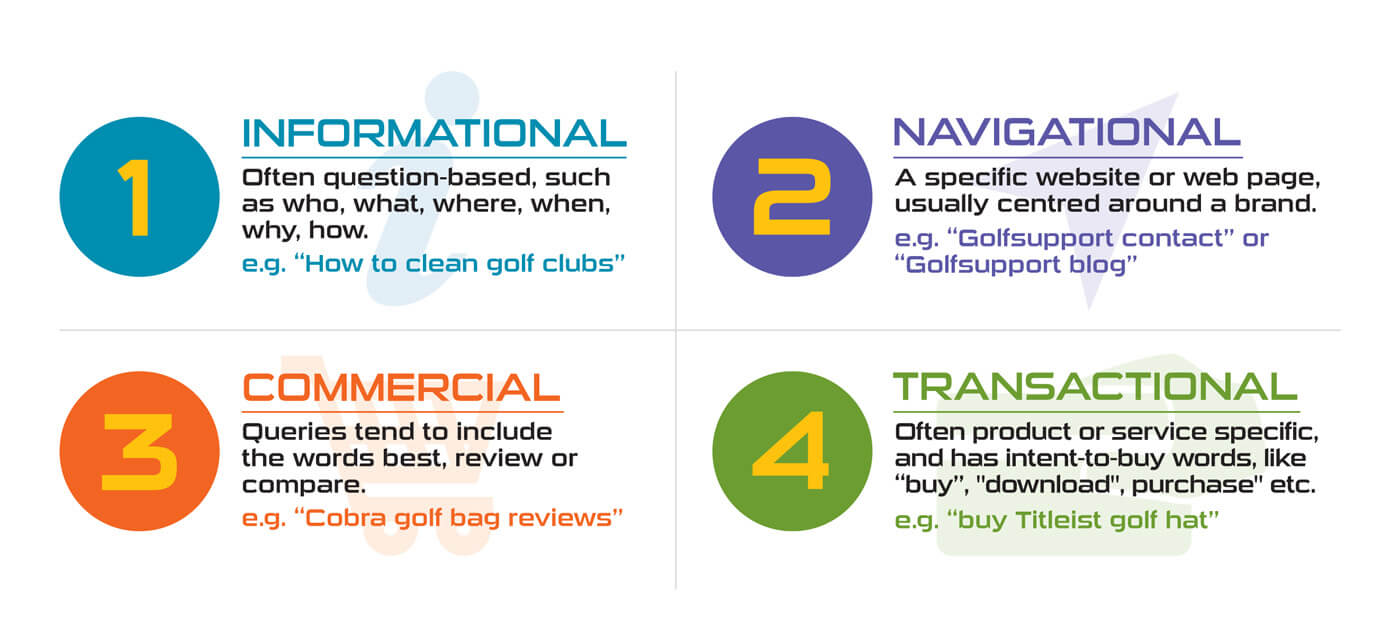Agencia 92: Your Source for Trending News
Stay updated with the latest insights and stories that matter.
Decoding Search Intent: Why It Matters More Than Your Keywords
Unlock the power of search intent! Discover why understanding it trumps keywords for driving traffic and boosting your blog's success.
Understanding the Different Types of Search Intent: A Comprehensive Guide
Understanding the different types of search intent is crucial for optimizing your content and improving your website's visibility. Search intent refers to the purpose behind a user's query, and generally falls into four main categories: informational, navigational, transactional, and commercial investigation. When crafting SEO-focused content, it's essential to identify the user's intent to match their expectations and provide valuable information that satisfies their needs.
1. Informational intent: Users are seeking knowledge about a specific topic or question.
2. Navigational intent: Users are looking for a particular website or page.
3. Transactional intent: Users intend to make a purchase or complete a transaction.
4. Commercial investigation: Users are researching products or services before making a decision. By tailoring your content to address these various types of search intent, you can enhance user experience and significantly boost your site's SEO performance.

How to Optimize Your Content for Search Intent: Strategies That Work
Understanding search intent is crucial for optimizing your content effectively. Search intent refers to the reason behind a user's query, and tailoring your content to meet those needs can significantly improve your rankings. Start by categorizing the types of search intents, which generally fall into four categories: informational, navigational, transactional, and commercial investigation. By analyzing the keywords associated with these intents, you can ensure that your content aligns with what users are genuinely seeking, thus increasing the likelihood of engagement and conversions.
Once you’ve identified the search intent, implement strategic elements to enhance your content. This includes utilizing long-tail keywords that reflect user queries more accurately, structuring your content to answer specific questions, and incorporating relevant multimedia such as images or videos. Additionally, ensure that the content is easy to scan by using subheadings, bullet points, and numbered lists to break up text, making it more digestible. Finally, regularly updating your content to keep it relevant will contribute to better performance in search results.
Why Prioritizing Search Intent Over Keywords Can Boost Your SEO Results
In the world of SEO, the traditional focus on keywords has often overshadowed the importance of understanding search intent. While keywords are certainly important, they are only a part of the equation. When you prioritize search intent, you shift your focus to the actual needs and motivations of users. This means creating content that answers their questions, solves their problems, and provides value—ultimately leading to higher engagement rates and better rankings in search results.
By aligning your content with search intent, you effectively enhance user experience, which is a critical factor in SEO. For example, consider the difference between informational, navigational, and transactional search intents. Tailoring your content to match these intents can make all the difference:
- Informational: Articles that provide comprehensive answers to users' queries.
- Navigational: Content that helps users find a specific website or page.
- Transactional: Pages that guide users towards making a purchase or completing a desired action.
By focusing on these aspects, you can significantly boost your SEO results.